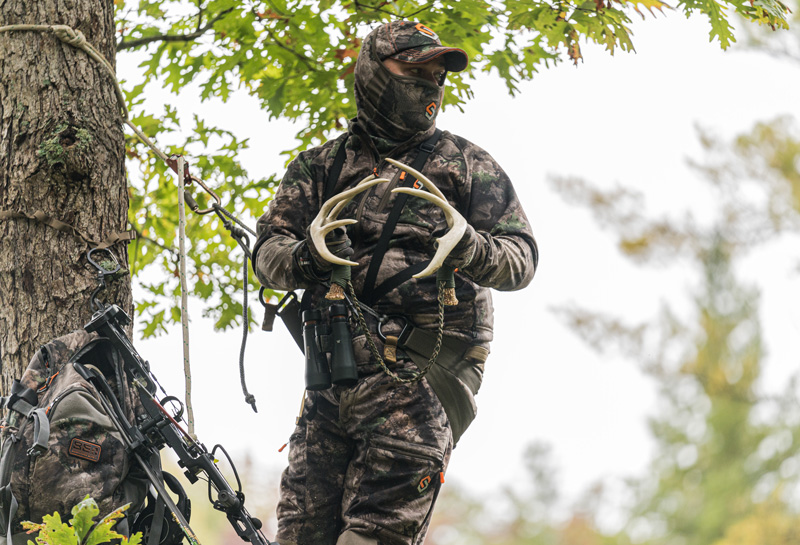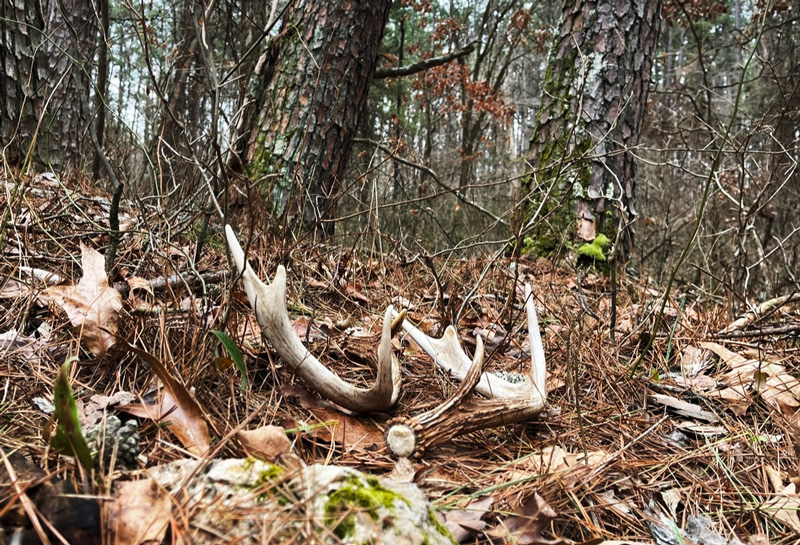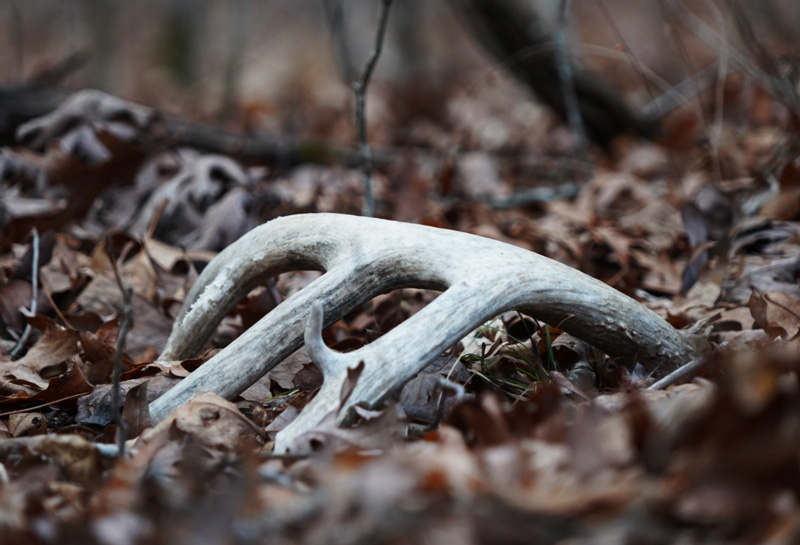Shed hunting, searching for discarded antlers, has gained popularity among hunters and outdoor enthusiasts. Beyond being a thrilling off-season activity, shed hunting offers many benefits, from providing insights into the local deer population to serving as a valuable scouting tool. Yet, there are still a few insights into shed hunting that hunters should consider before going on their treasure hunt.
I’ve often encountered more shed antlers when I’m not actively searching for them compared to dedicated shed hunting trips. For instance, my wife and I have spent hours searching for hidden whitetail buck antlers without success, only to return empty-handed. On other occasions, like during a coyote hunting expedition with a friend, I’ve discovered a beautiful antler just minutes after leaving a calling stand, driving down an old woods road. Finding an antler that we had unknowingly driven over an hour earlier was fascinating. Additionally, I’ve stumbled upon numerous antlers while walking toward a gobbling tom during spring turkey season. The unpredictable nature of shed hunting adds excitement and intrigue—you never know when or where you might find them.

The Benefits of Shed Hunting
Discovering antlers that a buck has shed is a prized find for hunters, suitable for home decor, custom knife crafting, and various projects that showcase the inherent beauty of antlers. However, hunters typically don’t invest countless hours searching for these treasures, like searching for a needle in a haystack, merely to add new decorations to their home or hunting cabin. Finding shed antlers can also serve as a valuable experience, contributing to the learning process and preparation for upcoming hunting season adventures.
Insight into Local Deer Population
Shed hunting offers a unique opportunity to gain valuable insights into the local deer population. By finding shed antlers, hunters can estimate the number and age of bucks in the area, helping them make informed decisions about future hunting strategies. The size and condition of the sheds can provide clues about the health and genetics of the deer herd.
Scouting for Prime Locations
Shed hunting is an effective scouting tool in identifying prime locations for the upcoming hunting season. Finding sheds in specific areas helps to indicate where bucks spend significant time, offering valuable information for setting up stands and planning hunting routes. This proactive approach can significantly enhance the chances of a successful hunt.
Understanding Deer Movement Patterns
Shed antlers can also shed light on deer movement patterns. The location and timing of shed discoveries can reveal bucks’ travel routes and bedding areas during the post-rut period. This knowledge is instrumental in adjusting hunting strategies and increasing the likelihood of encountering bucks in their natural habitat.

Utilizing Shed Hunting as a Scouting Tool
Where To Look
Successful shed hunting requires a systematic approach. Start by focusing on known deer habitats, including feeding areas, bedding sites, and travel corridors. Develop a grid-like search pattern to cover the terrain thoroughly. Strategic planning increases the chances of finding sheds and provides a structured method for scouting.
Timing Matters
Understanding the timing of shed dropping is crucial. In regions with harsh winters, sheds are likely found in late winter or early spring when deer shed their antlers to conserve energy. However, as with this year in southern Missouri, antlers have begun dropping as soon as late December. Some experts predict that early shedding could result from a dry fall and lack of food such as white oak acorns.
By timing shed hunting expeditions correctly, hunters can maximize their chances of discovering antlers before they become obscured by vegetation or consumed by rodents. Many hunters keep their game cameras running for weeks past the hunting season to help time when bucks begin to lose antlers.

Misconceptions About Shed Hunting
Shed Antlers Indicate Where Bucks Should Be Hunted
Although finding antlers can help determine new locations to hunt, it is vital to know where and how your deer herd travel patterns change during the late season or later in the winter. Food, pressure, and other factors can often move deer to different areas when antlers fall, resulting in a misunderstanding about where deer are. Again, use game cameras to determine where deer are traveling at different points of the season.
Shed Hunting Negatively Impacts Deer Habitats
Some hunters worry that shed hunting can disturb deer habitats and negatively impact the local population. However, shed hunting has minimal impact on deer behavior and habitats when done responsibly and ethically. Respect for wildlife and adherence to ethical practices ensure that the activity remains sustainable and beneficial.
Shed hunting is undoubtedly worthwhile for hunters and outdoor enthusiasts. The benefits, from gaining insights into the local deer population to using sheds as a scouting tool, make it a rewarding off-season activity. By dispelling common misconceptions and adopting responsible practices, shed hunting can become integral to a hunter’s arsenal, providing valuable knowledge and enhancing the overall hunting experience. So, gear up, hit the trails, and uncover the hidden treasures shed hunting offers.

